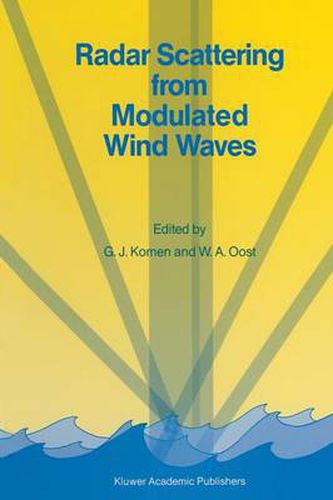Readings Newsletter
Become a Readings Member to make your shopping experience even easier.
Sign in or sign up for free!
You’re not far away from qualifying for FREE standard shipping within Australia
You’ve qualified for FREE standard shipping within Australia
The cart is loading…






This title is printed to order. This book may have been self-published. If so, we cannot guarantee the quality of the content. In the main most books will have gone through the editing process however some may not. We therefore suggest that you be aware of this before ordering this book. If in doubt check either the author or publisher’s details as we are unable to accept any returns unless they are faulty. Please contact us if you have any questions.
Ten years ago, de Loor and co-workers at TNO, The Netherlands, were the first to report bottom topography patterns in real aperture radar (RAR) images of the southern North Sea. At that time, this was a real puzzle. The skin depth of microwaves for sea water is only of the order of centimeters while the sea bottom is about 20 meters below the surface. Electromagnetic radiation therefore cannot probe the bottom directly. Similar phenomena were found in radar imagery from SEASAT and SIR-AlB synthetic aperture radars (SAR’s) of Nantucket Shoals, the English Channel and many other coastal areas. Since then theory and ocean field experiments (Le., Phelps Bank, Georgia Straits, SARSEX, TOWARD, FASINEX, etc.) have advanced our understanding considerably. We now know that these surface signatures are the results of surface currents, perturbed by the bottom topography, which refract the propagation and modulate the energy of (short) surface waves so as to cause microwave backscatter power variations. Hence, any large scale ocean features containing nonuniform surface currents (i.e. internal waves, eddies, fronts, etc.) will cause similar manifestations in the radar imagery by means of current-wave-microwave interactions. Observations confirm this.
$9.00 standard shipping within Australia
FREE standard shipping within Australia for orders over $100.00
Express & International shipping calculated at checkout
This title is printed to order. This book may have been self-published. If so, we cannot guarantee the quality of the content. In the main most books will have gone through the editing process however some may not. We therefore suggest that you be aware of this before ordering this book. If in doubt check either the author or publisher’s details as we are unable to accept any returns unless they are faulty. Please contact us if you have any questions.
Ten years ago, de Loor and co-workers at TNO, The Netherlands, were the first to report bottom topography patterns in real aperture radar (RAR) images of the southern North Sea. At that time, this was a real puzzle. The skin depth of microwaves for sea water is only of the order of centimeters while the sea bottom is about 20 meters below the surface. Electromagnetic radiation therefore cannot probe the bottom directly. Similar phenomena were found in radar imagery from SEASAT and SIR-AlB synthetic aperture radars (SAR’s) of Nantucket Shoals, the English Channel and many other coastal areas. Since then theory and ocean field experiments (Le., Phelps Bank, Georgia Straits, SARSEX, TOWARD, FASINEX, etc.) have advanced our understanding considerably. We now know that these surface signatures are the results of surface currents, perturbed by the bottom topography, which refract the propagation and modulate the energy of (short) surface waves so as to cause microwave backscatter power variations. Hence, any large scale ocean features containing nonuniform surface currents (i.e. internal waves, eddies, fronts, etc.) will cause similar manifestations in the radar imagery by means of current-wave-microwave interactions. Observations confirm this.